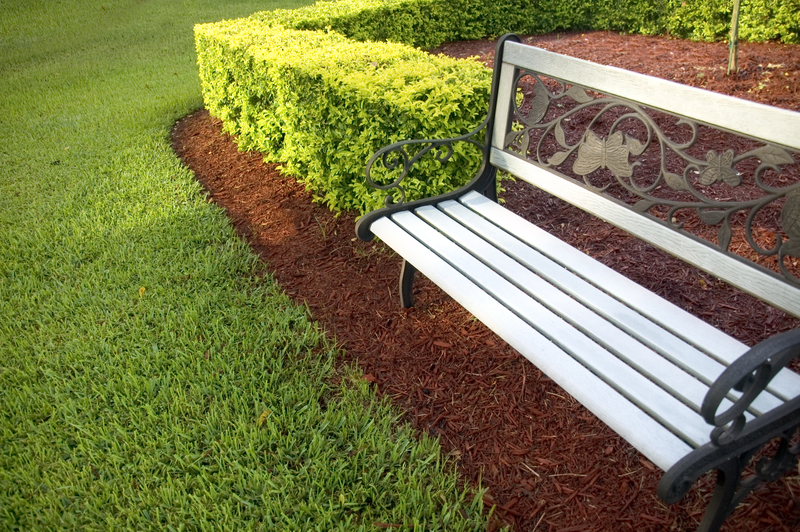Some of us might view mulch as an additional cost or task to our yardwork. In reality, it doesn’t take long to mulch your yard and doesn’t have to cost you a lot of money. It can add much more to a yard than you might think. It could be the last element your property needed to look fully complete!
Why Mulch?
The reasons I use mulch are mostly about utility and efficiency. It discourages weed growth, helps retain water, defines walking paths, improves soil health, and discourages my cat and other animals from digging. It also makes it easier to mow.
Other reasons to use mulch are more focused on aesthetics. A manicured layer of ground cover around flower beds, bordering everything from household structures to fences to walls to ornamental trees and shrubs to pools, is generally considered attractive.
Other mulching uses include covering steep banks and other areas which can be challenging to mow and where erosion control is a factor.
What to Use?
Grass clippings, weeds, leaves, cardboard, newspaper, wood scraps, rubber, plastic, and more are all great for mulching (rubber and plastic won’t decompose). You can get mulch from farm and garden retailers, landscapers, recycle facilities, or your own backyard.
When most people envision mulch, they think of coarsely ground-up bits of bark and other wood products, purchased by the cubic yard. It can be natural colored or dyed in shades of red or black.
I use a lot of other substances for mulch. I use three-foot-wide strips of used carpet as a semi-permanent border and weed barrier around the edge of my in-ground garden. They can be moved out of the way for rototilling and neatened up every season. The carpet kills the lawn grass beneath it, allowing me to easily expand the size of my garden every year, but is permeable enough to allow air and water through it.
Between rows of vegetables, my go-to is simple newspaper and lawn grass clippings. I lay a complete cover of newspaper, add a thick — six inches or more — layer of fresh lawn grass, and water it well to keep it in place until it forms itself into a mat that will resist being blown away.
I use layers of industrial cardboard, which I get from my local recycle center, under my raised beds. This helps keep weeds out and water in; it is not foolproof, but it makes a difference.
I use round rubber mulch mats around the base of some of my young trees. These are thick flexible mats, two to three feet across, that lay on the ground around a tree much like a Christmas tree skirt. These, too, can be costly, but last a long time and are very versatile and time-saving.
Are There Any Downsides to Mulching?
Bear in mind that plant roots need air, water and nutrients, as do beneficial organisms in the soil itself. Use impermeable materials with wisdom and forethought.
Also, consider the presence of chemicals. I generally avoid new flooring and instead opt for that which has had the opportunity to adequately off-gas that it will not add anything undesirable to the soil or air.
Another possible disadvantage of mulch is that it can provide appealing habitat for wildlife.
When and How?
Getting mulch applied early is key. It is much harder to eliminate weeds once they have appeared.
Pile it on thick and cover the area thoroughly.
Do you mulch your yard and garden? Do you have any other tips and tricks for mulching?
Article Source: Off The Grid News
